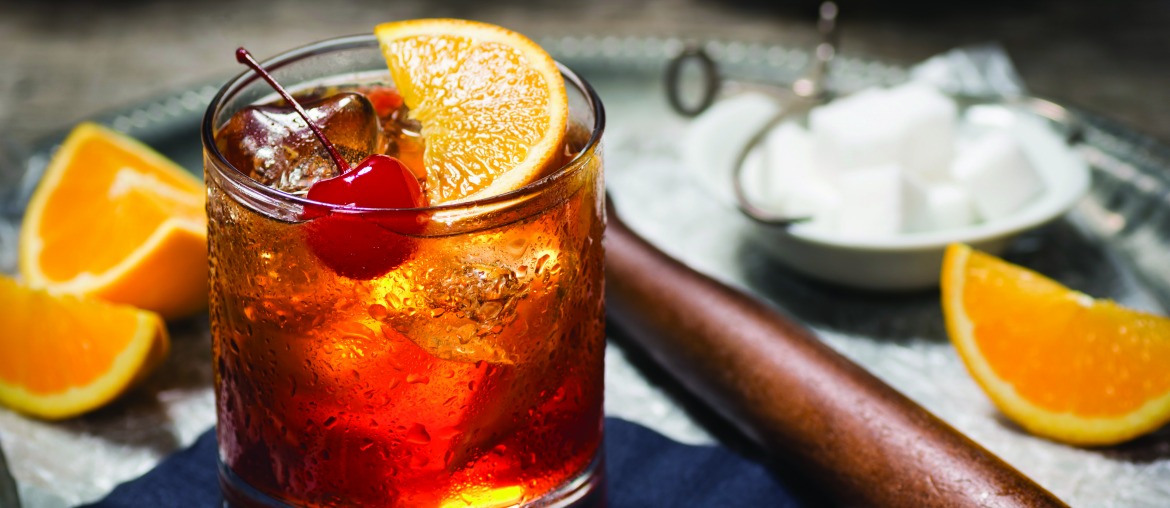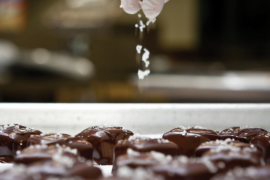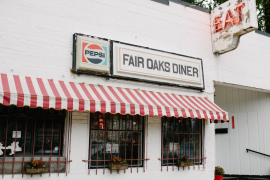When a puzzled out-of-stater asks about supper clubs, questions often involve exclusivity: What is the membership fee? If I’m not a member, can I still go in? If I live out of state, am I welcome?
One thing that distinguishes a good supper club from other restaurants is its welcoming nature, the feeling that everybody belongs and nobody leaves as a stranger. This is your destination for the night, not a hop between activities, especially in Northwoods Wisconsin, home to many traditional and generations-old supper clubs.
The night starts and ends with cocktails that you likely wouldn’t drink at any other time or place. Most popular before a supper club meal is the Brandy Old Fashioned. The classic bookend, for dessert, is a Grasshopper, Brandy Alexander, Pink Squirrel or other ice cream drink. One might be big enough for two to sip, spoon and swoon over.
Menu specials of a fish fry on Fridays and slow-roasted prime rib on Saturdays are typical, too. So is starting the meal with a complimentary nibble of something, such as cheese spread with crackers at the bar.
The Plantation, near Woodruff, automatically serves Cheeseys (cocktail bread topped with an onion-mayo mix and melted Swiss) to diners. The Chippewa Inn, near Hayward, delivers a relish tray of marinated olives, port wine cheese spread, pickled herring, liver pate, cherry peppers and raw veggies.
Portions are ample, and doggie bags common. Owners of White Stag Inn, near Rhinelander, take pride in keeping much the same as when their grandfather bought the business in 1955. That means charcoal-broiled steaks, one choice of potato (baked) and salad (a plain wedge of iceberg lettuce) topped with secret-recipe dressings that also are sold by the quart.
In the White Stag’s entryway is a sign that declares, “If you have reservations, you’re in the wrong spot,” and that’s business as usual for some but not all supper clubs. An exception is the 60-seat Smokey’s near Manitowish Waters, which presents a mix of gourmet entrees — such as Veal Marsala — and customary fare.
These dining spots tend to open only for dinner, but there are exceptions. The Village Inn in Cornucopia adds lunch because its loyal customers want it, and whitefish caught by the neighborhood’s commercial fishermen shows up in tasty chowder, sliders, sandwich spread and entrée fillets. Whitefish livers, a delicacy, are seasoned and pan-fried with green peppers and onions.
More likely than not, the Wisconsin supper club began as a destination to mark the end of a hard week of work. The most loyal patrons would find neighbors here, week after week, because the supper club was close to home.
Locations vary wildly. Consider the rural Lanny’s Fireside near Conover, McGregor’s Blink Bonnie near St. Germaine and Swearingen’s Al-Gen near Rhinelander. Some supper clubs operate in resorts, including Hintz’s North Star Lodge on Star Lake, Pitlik’s on Sand Lake and Chanticleer Inn on Voyageur Lake (all near Eagle River).
Bullet holes from a 1934 gangster fight are a matter of pride at Little Bohemia, Manitowish Waters, a filming site for the 2009 “Public Enemies” movie starring Johnny Depp as John Dillinger. Inside the homey Tally Ho near Hayward, an English Tudor structure, is a bit of taxidermy because of the area’s love of hunting.
Each supper club is one of a kind, right down to what decorates their walls and shelves. That might mean vintage family photos or kitsch from bygone eras. Many supper clubs began as simple roadhouses or taverns that happened to sell food; a shack behind The Guide’s Inn, Boulder Junction, stored moonshine in the 1920s.
Regardless of setting and history, chances are good the supper owner will get to know loyal customers by name and find a way to make time for them — even when working the kitchen on a busy Saturday night.
The personal touch fosters a sense of connection and community, which is a big part of what distinguishes the supper club from other types of restaurants — and no state embraces the concept more than Wisconsin.
This article originally appeared in the 2016 fall/winter issue of Experience Wisconsin magazine. The contents of this article were checked for accuracy when it was published; however, it’s possible some of the information has changed. We recommend you call first if you have specific questions for the destinations, attractions or restaurants mentioned in this article.
No portion of this article or magazine may be reproduced without prior written permission by the publisher.






4 Comments
Pingback: Check Out These Most Unique Places to Stay in Wisconsin - Experience Wisconsin
Pingback: Five Wisconsin Diners You’ll Love | Experience Wisconsin
Pingback: Seven Ways to Enjoy Fall in the Northwoods | Experience Wisconsin
Pingback: Try These Winter Date Night Ideas in Lake Geneva | Experience Wisconsin